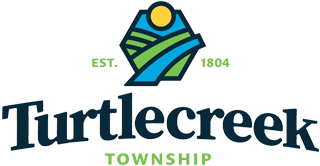Departments
Road Department Policies
Introduction:
The purpose of Turtlecreek Township’s Snow Removal Policy is to provide the safest possible roadway system and access routes for the motoring public, public transit, public schools, fire, police, emergency aid vehicles, the citizens of Turtlecreek Township and the surrounding communities.
Operations:
Turtlecreek Township employs a road maintenance crew for handling snow and ice control on township roads. The road maintenance crew is a group of dedicated, full-time employees that work year-round and who are individually required to maintain a Commercial Driver's License (CDL).
During normal business hours, the Road Supervisor is responsible for evaluating the need for road treatment and will continue to monitor township roadways as snow conditions become more severe.
After normal hours of operation, initial calls are made by Warren County Communications Center to the Road Supervisor. The Road Supervisor is then called in to evaluate the need for road treatment and determine the workforce needed to treat the roads.
What to Expect during a Snow Event:
The Turtlecreek Township Road Department standards do not include a bare pavement policy. Snow removal and treatment operations will be conducted only on township-maintained roadways generally in accordance with the following priority ratings.
Priority #1: Main roads, major thoroughfares, and streets with steep hills or sharp curves are plowed first. These streets are given top priority to ensure services such as ambulances, sheriff and other emergency equipment can respond. Primary streets will continue to receive treatment as long as weather conditions continue.
Priority #2: Secondary streets that intersect major thoroughfares. These roads will be plowed and salted once priority #1 streets have received treatment.
Priority #3: Residential streets and cul-de-sacs will be serviced once priority #1 and priority #2 streets are cleared. This may mean that residential streets are limited to one lane for a few days. After the initial snow removal, crews will return to perform additional clean up, as necessary.
When a snow and ice event continue, the Road Department continually monitors routes (depending on priority).
Safety:
During a Winter Storm Event
Please do not allow children and pets to play on roadways or on the snow berms as this is extremely dangerous. Drivers may not see them or be able to stop in time to avoid hitting them.
As snow is plowed from roadways, windrows (a line or row of snow) can be created at the end of driveways and are the property owner’s responsibility to clear. Please do not shovel or put snow from driveways onto or across any roadway as this is unlawful and creates a hazard for other drivers.
If you are removing snow from your property and a township snowplow approaches, there is a strong possibility that you are not visible to the operator. Dark clothing, the hour of day and weather conditions inhibit visibility. Protect yourself from injury by giving the plow operator extra room to perform the task.
On the Road
Please do not go out until the snowplows and salt mix trucks have had a chance to do their work and allow yourself extra time to reach your destination. If you must drive in snowy conditions, make sure your car is prepared, and that you know how to manage road conditions.
Snowplows make frequent stops and backup maneuvers, do not drive your car up behind a snowplow as the driver may be unable to see you and inadvertently back into your car. If you are behind a plow that stops, stop your vehicle in such a way that your car looks into the drivers outside rearview mirror, and please give them extra room.
Drivers are also urged to give an oncoming snow truck right of way. During the winter months, the berm or shoulder of the road is often too soft to support the weight of a loaded salt truck. These drivers cannot move off the road to let oncoming traffic pass on narrow roads. If you see a salt truck approaching a narrow road, please be courteous and pull off into the nearest driveway and let the snow truck pass.
Winter Mailbox Preparation and Damage:
Residents are encouraged to inspect their mailboxes before snow to prevent damage from snow removal efforts. Check for weaknesses like cracks, leaning posts or rot. For proper placement, please contact your local postal service.
The township will repair mailboxes damaged by direct contact with township plows if the mailbox was properly installed and in good condition. For questions, please contact Kenny Hickey, Road Supervisor, at 513-932-4902.
Curbside Mailboxes
Mailbox Size & Construction Standards
A mailbox with the Postmaster General's (PMG) seal of approval meets USPS size and construction standards. If you build your own mailbox or buy a custom-made one, it must meet the PMG standards. Show your local postmaster your mailbox plans or your custom-made box for approval.
To get drawings and measurements for building your own mailbox, write to US Postal Service Engineering.
Want to buy a mailbox big enough for packages? See Next Generation Mailboxes.
Where to Place the Mailbox
Here are some helpful guidelines to follow when placing your mailbox:
· Position your mailbox 41″ to 45″ from the road surface to the bottom of the mailbox or point of mail entry.
· Place your mailbox 6″ to 8″ back from the curb. If you do not have a raised curb, contact your local postmaster for guidance.
· Put your house or apartment number on the mailbox.
· If your mailbox is on a different street from your house or apartment, put your full street address on the box.
Installing the Mailbox Post
The best mailbox supports are stable but bend or fall away if a car hits them. The Federal Highway Administration recommends:
· A 4″ x 4″ wooden support or a 2″-diameter standard steel or aluminum pipe.
· Avoid unyielding and potentially dangerous supports, like heavy metal pipes, concrete posts, and farm equipment (e.g., milk cans filled with concrete).
· Bury your post no more than 24″ deep.
